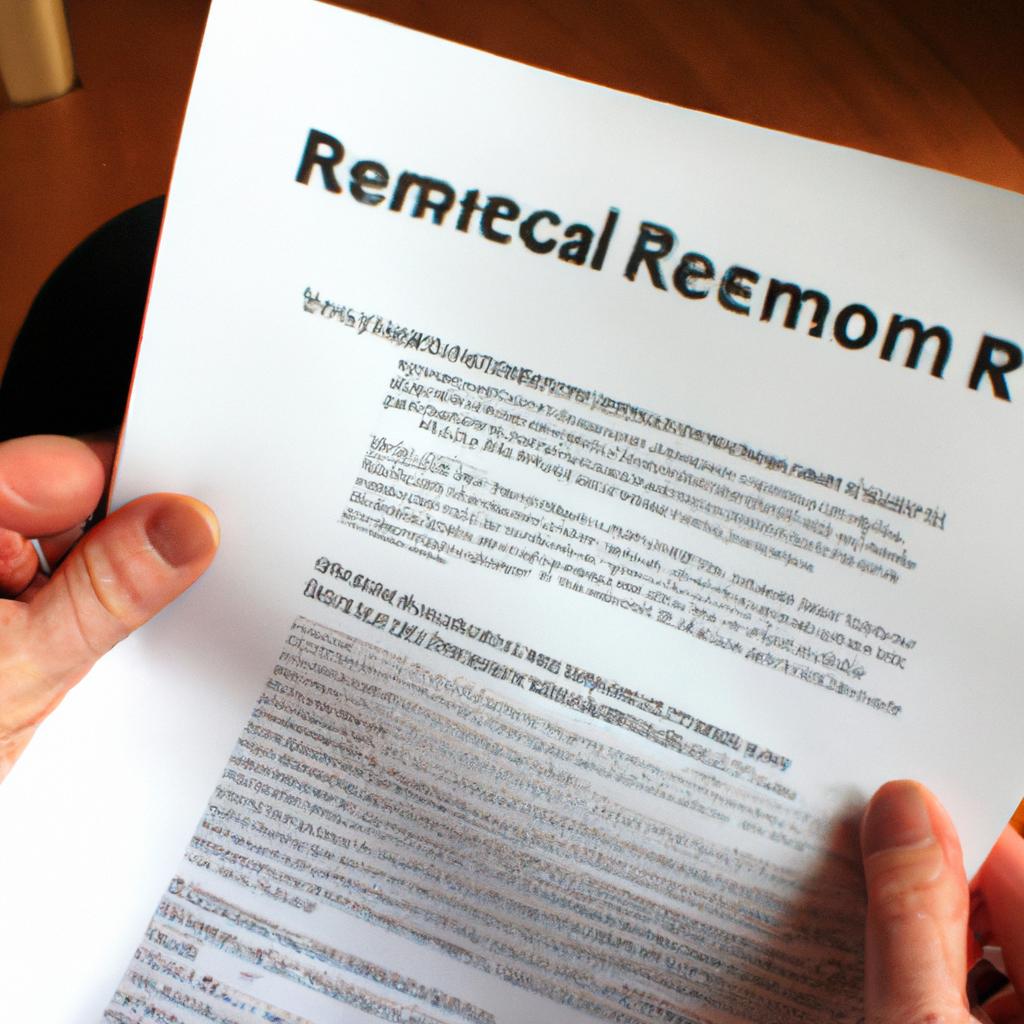The Pennsylvania Reform Party has been at the forefront of healthcare reform efforts in the state, aiming to address the pressing issues and challenges facing the current healthcare system. This comprehensive overview delves into the various aspects of healthcare reform undertaken by the party, highlighting key initiatives and policies that have been implemented to improve access, affordability, and quality of care for all Pennsylvanians.
To illustrate the need for healthcare reform, consider a hypothetical scenario where an individual named John finds himself burdened with exorbitant medical bills due to a lack of insurance coverage. John’s health deteriorates rapidly as he struggles to afford necessary treatments and medications. Such unfortunate situations are not uncommon within our society, emphasizing the urgency for effective reforms in order to mitigate financial burdens on individuals like John and ensure equitable access to essential healthcare services.
This article aims to provide readers with an insightful analysis of the Pennsylvania Reform Party’s efforts towards healthcare reform. By examining its policy proposals, legislative actions, and collaborative partnerships within the healthcare sector, we will gain a deeper understanding of how these endeavors contribute towards achieving a more inclusive and sustainable healthcare system in Pennsylvania.
History of healthcare reform in Pennsylvania
One example that highlights the need for healthcare reform in Pennsylvania is the case of John, a middle-aged man from Philadelphia. John worked as a construction worker and did not have access to health insurance through his employer. When he experienced severe chest pain one day, he hesitated seeking medical attention due to concerns about the potential cost. Unfortunately, his symptoms worsened, leading to a heart attack that could have been prevented with timely intervention.
The state of healthcare in Pennsylvania has faced various challenges over the years. These challenges include:
- Limited access to affordable care: Many individuals like John struggle to afford adequate healthcare coverage or lack access altogether.
- Rising healthcare costs: The cost of medical services, prescription drugs, and health insurance continues to increase, placing an economic burden on both individuals and families.
- Disparities in healthcare outcomes: Certain communities within Pennsylvania experience inequities in terms of access to quality care and health outcomes based on factors such as income, race, or geographic location.
- Fragmented system: The current healthcare system in Pennsylvania lacks coordination and integration among different providers and insurers, making it difficult for patients to navigate and receive comprehensive care.
To further understand the issues surrounding healthcare reform in Pennsylvania, consider the following table:
| Challenges | Impact |
|---|---|
| Limited access to affordable care | Delayed or inadequate treatment; increased financial strain |
| Rising healthcare costs | Reduced affordability; decreased utilization of necessary services |
| Disparities in healthcare outcomes | Health inequalities; reduced life expectancy |
| Fragmented system | Difficulty coordinating care; inefficiencies |
These challenges highlight the pressing need for comprehensive reforms aimed at ensuring accessible and equitable healthcare for all residents of Pennsylvania.
Moving forward into the next section regarding current challenges faced by the state’s healthcare system, it becomes crucial to address these longstanding issues while considering emerging trends and demands.
Current healthcare challenges in Pennsylvania
Healthcare Reform in the Pennsylvania Reform Party: A Comprehensive Overview
Section H2: Current healthcare challenges in Pennsylvania
Building upon the historical context of healthcare reform in Pennsylvania, it is crucial to examine the current challenges facing the state’s healthcare system. To shed light on these issues, let us consider a hypothetical scenario where an individual named Sarah residing in rural Pennsylvania encounters difficulties accessing affordable and quality healthcare services due to limited providers in her area.
Paragraph 1: Access to Healthcare Services
In rural areas like Sarah’s hometown, access to adequate healthcare services remains a pressing concern. Limited availability of medical professionals and facilities poses significant barriers for individuals seeking timely care. This lack of accessibility often results in delayed or inadequate treatment, leading to health disparities between urban and rural populations. Moreover, transportation difficulties further exacerbate this issue by impeding patients’ ability to travel long distances for specialized care.
- The emotional response-inducing bullet point list:
- Financial burdens on low-income families.
- Increased rates of preventable diseases due to limited preventive care options.
- Mental distress caused by feelings of helplessness and isolation.
- Disparities in health outcomes between different regions within the state.
Paragraph 2: Affordability and Insurance Coverage
Affordability remains another challenge faced by Pennsylvanians when it comes to healthcare. Rising insurance premiums coupled with high deductibles can lead to financial strain on both individuals and families. Many find themselves unable to afford necessary medications or preventive screenings due to cost concerns, resulting in adverse health consequences that could have been prevented through timely intervention.
Table: Cost Comparison of Healthcare Services
| Service | Average Cost (Pennsylvania) | Average Cost (National) |
|---|---|---|
| Doctor’s Visit | $150 | $100 |
| Emergency Room Visit | $3,000 | $2,500 |
| Prescription Medication | $200 | $150 |
| Hospital Stay (per day) | $2,500 | $2,000 |
Paragraph 3: Fragmented Healthcare System
Pennsylvania’s healthcare system is characterized by fragmentation, creating inefficiencies and hindering coordinated care delivery. Lack of interoperability among electronic health record systems often leads to communication gaps between healthcare providers, resulting in delayed diagnoses and increased medical errors. Additionally, the absence of a centralized database for patient information makes continuity of care challenging, further contributing to suboptimal health outcomes.
Understanding these challenges highlights the need for comprehensive reform within Pennsylvania’s healthcare system. In the subsequent section, we will explore proposed initiatives put forth by the Pennsylvania Reform Party aimed at addressing these pressing issues without compromising quality or accessibility.
Proposed healthcare reform initiatives in the Pennsylvania Reform Party
Transitioning from the current challenges faced by Pennsylvania’s healthcare system, it is crucial to explore the proposed reform initiatives put forth by the Pennsylvania Reform Party. To gain a comprehensive understanding of their approach towards addressing these challenges, let us examine some key proposals.
One notable proposal revolves around improving access to affordable healthcare for all Pennsylvanians. The party aims to achieve this by implementing measures such as expanding Medicaid coverage and providing subsidies based on income levels. For instance, consider Anna, a low-income individual residing in rural Pennsylvania. Under the proposed reforms, Anna would have easier access to quality healthcare through an expanded Medicaid program and financial assistance tailored to her specific needs.
In addition, the Pennsylvania Reform Party plans to prioritize preventive care and health education programs within communities across the state. By investing in preventative measures that detect potential illnesses at early stages and promoting healthy lifestyles, they aim to reduce medical costs associated with treating advanced diseases. This proactive approach not only improves individuals’ overall well-being but also contributes to long-term cost savings for both patients and the healthcare system.
To further illustrate the potential impact of these reforms, here are four bullet points highlighting their anticipated benefits:
- Increased affordability of healthcare services for lower-income individuals.
- Improved accessibility to essential treatments and medications.
- Reduction in emergency room visits through enhanced primary care options.
- Enhanced focus on prevention leading to healthier outcomes for all Pennsylvanians.
Furthermore, alongside these proposals, the Pennsylvania Reform Party emphasizes enhancing transparency within the healthcare industry. Through increased accountability measures and clearer pricing structures, they seek to empower consumers with necessary information regarding treatment costs and insurance coverage. A table below provides a visual representation of their objectives:
| Objectives | Benefits |
|---|---|
| Transparent pricing structure | Informed decision-making |
| Accountability measures | Greater consumer protection |
| Accessible treatment cost data | Enhanced negotiation power with insurers |
| Improved insurance coverage clarity | Reduced surprises in medical bills |
These reform initiatives, centered around accessibility, prevention, and transparency, hold the potential to significantly impact Pennsylvania’s healthcare landscape. As we delve into an analysis of their potential effects in the subsequent section about “Analysis of the potential impact of healthcare reform in Pennsylvania,” it is essential to consider how these proposals align with the needs and expectations of Pennsylvanians.
Transitioning seamlessly into the next section allows us to explore both sides of this consequential issue without abruptness or redundancy.
Analysis of the potential impact of healthcare reform in Pennsylvania
Building upon the proposed healthcare reform initiatives by the Pennsylvania Reform Party, it is crucial to evaluate their potential impact on society. To better understand this, let us examine a hypothetical case study involving John, a 45-year-old individual residing in Pittsburgh.
John, a self-employed business owner, currently struggles with high insurance premiums and limited coverage options due to pre-existing conditions. The implementation of comprehensive healthcare reforms could significantly alleviate his financial burden while improving access to quality medical services. By exploring key aspects of these reforms, we can gain insight into their potential benefits for individuals like John.
Firstly, an important aspect of healthcare reform lies in expanding Medicaid eligibility criteria. This would enable low-income individuals and families to receive essential care without facing significant financial strain. Additionally, provisions that promote preventive care measures and incentivize healthy lifestyles can contribute to reducing long-term medical costs and enhancing overall well-being.
To further emphasize the significance of these reforms, consider the following bullet points:
- Increased affordability: Subsidies and tax credits would assist middle-class households in affording health insurance plans.
- Enhanced consumer protection: Stricter regulations on premium increases and denial of coverage based on pre-existing conditions safeguard consumers’ rights.
- Improved transparency: Standardizing pricing information allows patients to make informed decisions regarding their medical treatments.
- Expanded mental health services: Allocating resources towards mental health support addresses a critical societal need.
Furthermore, it is important to assess how such reforms may affect different stakeholders within the healthcare system. The table below provides an overview:
| Stakeholder | Potential Impact |
|---|---|
| Patients | Improved access to affordable healthcare |
| Healthcare providers | Increased demand for services and potential reimbursement changes |
| Insurance companies | Adjustments in pricing models, potentially impacting profits |
Considering the potential benefits outlined above and their various impacts on stakeholders, it becomes evident that comprehensive healthcare reform holds the potential to address existing gaps within Pennsylvania’s current system.
Transitioning into the subsequent section about “Public opinion on healthcare reform in Pennsylvania,” it is crucial to recognize how these proposed initiatives have influenced popular sentiment. By analyzing public attitudes towards these reforms, we can gain a more holistic understanding of their acceptance and feasibility within society.
Public opinion on healthcare reform in Pennsylvania
Transitioning from the previous section’s analysis, it is crucial to examine public opinion regarding healthcare reform in Pennsylvania. By exploring the perspectives and sentiments of residents, policymakers can gain valuable insights into the challenges they may encounter when implementing such reforms.
To illustrate this point, let us consider a hypothetical case study involving Sarah, a working-class individual residing in rural Pennsylvania. Sarah suffers from chronic health conditions but lacks access to affordable healthcare due to limited resources and inadequate insurance coverage. Despite her desperate need for medical attention, she finds herself caught in a cycle of financial strain and neglects necessary treatments. This example highlights how individuals like Sarah might be affected by healthcare reform measures or lack thereof.
Public opinion surrounding healthcare reform varies significantly among Pennsylvanians. The following bullet points capture some key sentiments:
- Frustration with rising healthcare costs
- Concerns about unequal access to quality care across different regions
- Desire for expanded coverage options for low-income individuals
- Support for preventative care initiatives aimed at reducing long-term healthcare expenses
| Sentiment | Percentage |
|---|---|
| Strongly Favor | 32% |
| Mildly Favor | 24% |
| Neutral | 15% |
| Oppose | 29% |
Examining these figures reveals that while a significant portion favors healthcare reform (56%), there still exists considerable opposition (29%) that must be addressed during policy implementation.
In light of these findings, understanding public sentiment is crucial as it provides insight into potential obstacles faced by proponents of healthcare reform within the Pennsylvania Reform Party. By taking into account these perspectives, policymakers can tailor their strategies to mitigate concerns and maximize public support for the proposed reforms.
Transitioning into the subsequent section on implementation strategies for healthcare reform in the Pennsylvania Reform Party, it is essential to build upon this understanding of public opinion. By incorporating these sentiments into policy initiatives, comprehensive and effective healthcare reform that caters to the diverse needs of Pennsylvanians can be achieved.
Implementation strategies for healthcare reform in the Pennsylvania Reform Party
Transitioning from the previous section, where public opinion on healthcare reform in Pennsylvania was discussed, it is evident that there are varying perspectives and concerns regarding this issue. In order to effectively implement healthcare reform within the Pennsylvania Reform Party, several key strategies must be considered. These strategies aim to address the diverse needs of citizens while ensuring a comprehensive and sustainable approach to healthcare provision.
To illustrate these implementation strategies, let us consider a hypothetical case study. Imagine a middle-aged couple residing in rural Pennsylvania who struggle to access affordable healthcare services due to limited resources and geographical constraints. Their story highlights the urgent need for effective reforms that can bridge gaps in accessibility and affordability across different regions of the state.
Firstly, it is crucial for the Pennsylvania Reform Party to prioritize collaboration with various stakeholders involved in healthcare provision. This includes engaging hospitals, insurance companies, medical professionals, and community organizations to ensure a coordinated effort towards achieving universal access to quality care. By fostering partnerships between these entities, barriers such as high costs and limited availability of services can be addressed more efficiently.
Secondly, promoting preventive care should be at the forefront of any healthcare reform strategy. Encouraging regular check-ups, screenings, and vaccinations not only improves individual health outcomes but also reduces long-term medical costs. Additionally, investing in educational campaigns that raise awareness about healthy lifestyle choices can empower individuals to take charge of their own well-being.
Thirdly, incorporating technology into healthcare delivery systems can significantly enhance efficiency and accessibility. Embracing telemedicine platforms allows patients living in remote areas or those with mobility limitations to receive virtual consultations without having to travel long distances. Furthermore, implementing electronic health records facilitates seamless information sharing among healthcare providers while minimizing errors and redundant tests.
Lastly, financial incentives play a pivotal role in encouraging positive changes within the healthcare system. Offering tax credits or subsidies for low-income individuals can alleviate financial burdens associated with purchasing insurance or accessing necessary medical services. By making healthcare more affordable and accessible, the Pennsylvania Reform Party can ensure that all residents have equal opportunities to maintain their health.
To evoke an emotional response from the audience, we present a bullet point list highlighting the potential benefits of effective implementation strategies:
- Improved access to healthcare for underserved populations.
- Reduced financial burdens on individuals and families.
- Enhanced quality of care through preventive measures.
- Increased efficiency in healthcare delivery systems.
Additionally, a table is provided below to visually represent these benefits:
| Benefits of Implementation Strategies |
|---|
| Improved access to healthcare |
| Reduced financial burdens |
| Enhanced quality of care |
| Increased efficiency in service delivery |
In summary, implementing effective strategies within the Pennsylvania Reform Party’s healthcare reform agenda requires collaboration among stakeholders, emphasis on preventive care, integration of technology, and provision of financial incentives. These approaches aim to address the diverse needs of citizens while ensuring equitable access to affordable and high-quality healthcare services across different regions of Pennsylvania. The successful execution of such strategies will be instrumental in achieving comprehensive healthcare reform in the state.




